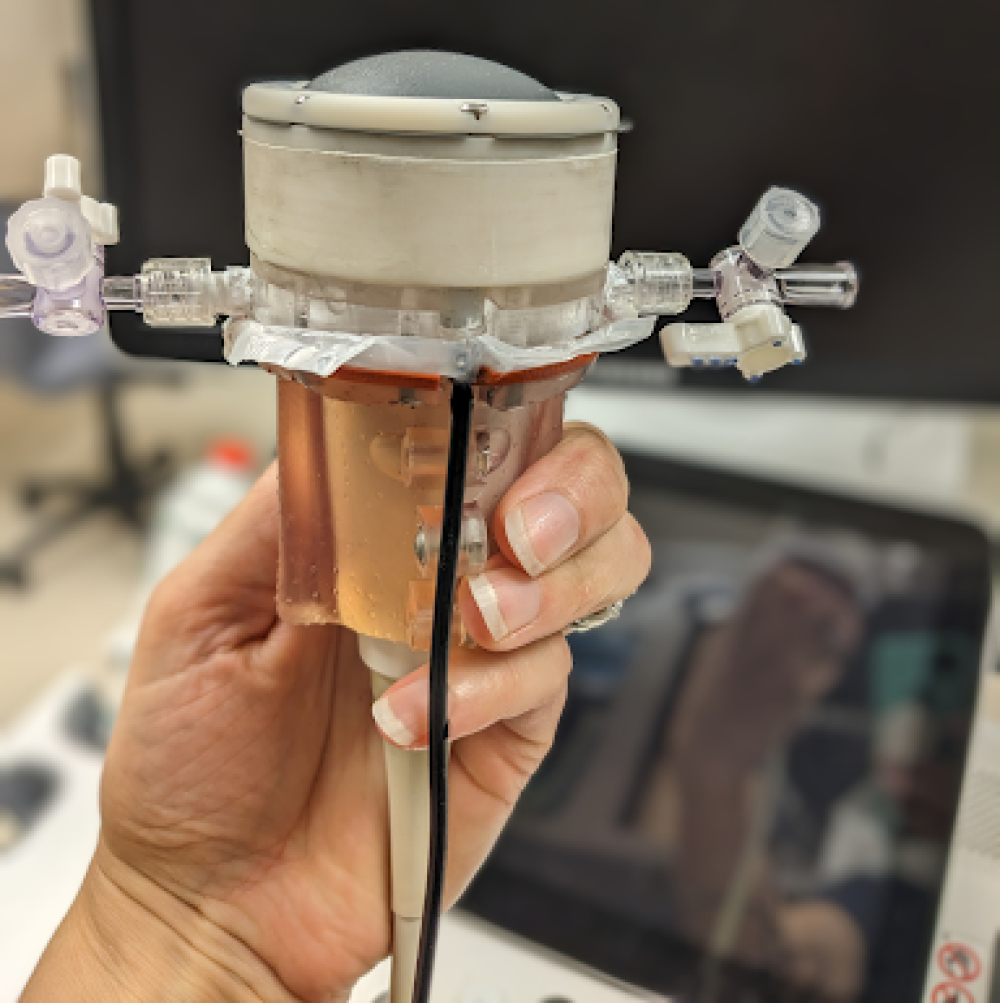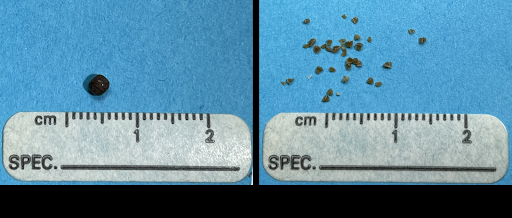Feline first: Pioneering technology offers a noninvasive solution to a common and complex problem
October 3, 2023

The BWL therapy transducer assembled around an imaging transducer
In a groundbreaking development, researchers from the University of Minnesota College of Veterinary Medicine and the Center for Industrial and Medical Ultrasound at the University of Washington have pioneered the world's first-ever burst wave lithotripsy (BWL) system designed specifically for treating ureteral stones in cats. Ureteral stones are located in the ureters, the tubes carrying urine from the kidneys into the bladder. When stones obstruct the ureter, they cause severe kidney damage and thus pose a significant health threat to feline companions. Current treatment options for ureteral stones come with notable risks and limitations, and alternative, less invasive treatment options are desperately needed.
This innovative system, originally developed for use in humans, utilizes focused ultrasound technology to break down stones into small fragments that can be passed. And unlike other treatments, namely surgical placement of an artificial ureter or stent, BWL is noninvasive and can be performed without hospitalization.

The challenge lay in modifying this technology to suit the unique anatomical characteristics of cats. This involved creating a smaller transducer, which is the piece of the equipment that delivers the treatment. It also required optimizing the “acoustic window” for feline patients—in other words, ensuring that the sound waves used to break up the stones can pass through a cat's body without any obstacles, like bones or organs, getting in the way.
In a recent publication in BMC Veterinary Research, the researchers describe the development and successful testing of the system, including comprehensive experiments using naturally occurring stones from cats, BWL proved remarkably effective, reducing the stones to pieces smaller than 1 mm.
This pioneering research marks a significant leap forward in veterinary medicine, offering a noninvasive, nontraumatic approach to treating these common stones in cats. By reducing the reliance on more invasive procedures with higher risks, this development has the potential to transform the management of ureteroliths in feline patients. CVM researchers led by Dr. Eva Furrow are now conducting a clinical trial—the final step to making the treatment broadly available.
Read the full study in BMC Veterinary Research.


